How to Survive an Earthquake

The Ultimate Guide to Earthquake Survival: What You Need to Know
The largest recorded earthquake in the United States was a magnitude 9.2 that struck Prince William Sound, Alaska, on Good Friday, March 28, 1964. When the next big one hits, you must be prepared to roll with it.
Earthquakes are one of the natural disasters that strike without warning.
Surviving an earthquake scenario requires planning, preparation, and practice. Earthquake-proofing your home, collecting supplies, and having an emergency plan for your family so you’ll know what to do when the ground starts moving are all important factors to increase your chances of survival.
Setting the Groundwork: An Introduction to Earthquake Preparedness
In the blink of an eye, the solid ground beneath our feet can turn into a violent shaker, transforming everyday life into a test of survival. Earthquakes, one of nature’s most formidable forces, strike without warning, leaving little room for hesitation or unpreparedness. The importance of being prepared for such an event cannot be overstated.
It’s not just about safeguarding property; it’s fundamentally about preserving lives and the well-being of communities. This guide is designed to walk you through the critical steps of earthquake preparedness, from understanding the science behind earthquakes to taking actionable steps before, during, and after a seismic event.
The journey towards earthquake readiness is both a personal and collective endeavor. Whether you reside in a known seismic hotspot or in areas where earthquakes are rare, knowing how to react can make a profound difference.
We’ll look into the essentials of securing your home and creating a robust survival kit, highlight the significance of developing a comprehensive readiness plan, and offer insights on protecting yourself and your loved ones when an earthquake strikes.
What is an Earthquake?
An earthquake is the sudden, rapid shaking of the earth caused by the breaking and shifting of subterranean rock as it releases accumulated strain over time. This seismic activity can occur due to natural tectonic processes and, less commonly, through human activities that alter the stress and strain on the earth’s crust. Earthquakes can range in size from those so weak they cannot be felt to those violent enough to propel objects and people into the air and wreak devastation across entire cities.
Understanding Earthquakes: The Ground Beneath Our Feet
Grasping the intricacies of earthquakes is not just for the scientifically curious—it’s a crucial step for anyone looking to navigate the challenges they present with confidence and resilience. At their core, earthquakes remind us of our planet’s dynamic and ever-changing nature.
Let’s examine the causes and science behind these seismic activities and where we’re most likely to encounter them around the globe. Armed with this knowledge, you’ll be better prepared to understand the whys and hows of earthquake preparedness.
What Causes Earthquakes?
- Tectonic Movements: Most earthquakes are triggered by the movement of the Earth’s tectonic plates. These massive plates can slide past one another, collide to form mountains or move apart, creating space that can fill with new crust. This movement releases a tremendous amount of energy, manifesting as earthquakes.
- Volcanic Activity: Though less common, volcanic eruptions can also provoke earthquakes. These are known as volcanic earthquakes and occur in conjunction with the movement of magma beneath the Earth’s surface.
- Human Activities: Surprisingly, human actions can also lead to earthquakes. Activities such as mining, reservoir-induced seismicity (filling large reservoirs behind dams), and even hydraulic fracturing (fracking) have triggered seismic events.
The Science Behind Seismic Activities
- Energy Release: Earthquakes occur when stored energy is suddenly released within the Earth’s crust. This energy travels as seismic waves that cause the ground to shake.
- Fault Lines: The Earth’s crust is fractured into pieces known as plates that move over a pliable layer. Most earthquakes occur along the edges of these plates, at fault lines, where energy accumulates until it’s suddenly released.
- Seismic Waves: Earthquakes generate several types of seismic waves, including P-waves (primary waves) and S-waves (secondary waves), each moving at different speeds and causing various kinds of movement.
Earthquake-Prone Areas Around the World
- The Pacific Ring of Fire: This zone is notorious for its frequent earthquakes and volcanic activity, circling the Pacific Ocean and including countries like Japan, Indonesia, and the west coast of the Americas.
- The Himalayan Region: The collision between the Indian and Eurasian Plate makes this area particularly susceptible to earthquakes.
- The Mediterranean-Asian Seismic Belt: Extending from the Mediterranean region through Asia, this belt is another hotbed for seismic activity due to complex interactions between several major and minor tectonic plates.
Expert Tips and Strategies
- Stay Informed: Understanding your local seismic risk can help you prepare appropriately. Use resources like the USGS Earthquake Hazards Program to stay updated.
- Home Safety Checks: Regularly inspect your home for earthquake resilience—secure heavy furniture, ensure buildings meet earthquake-resistant construction standards, and retrofit older structures.
- Emergency Preparedness: Prepare an emergency kit, create a family evacuation plan, and know how to “Drop, Cover, and Hold On” during an earthquake.
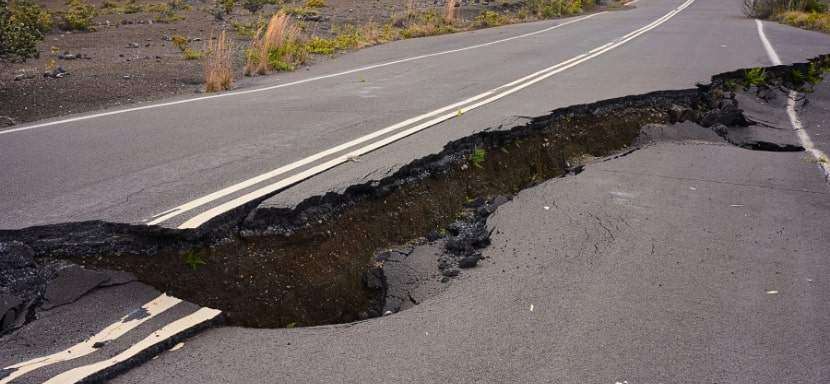
Before an Earthquake: Preparation is Key
The adage “forewarned is forearmed” couldn’t be more apt regarding earthquakes. While we can’t predict precisely when an earthquake will strike, we can prepare to face one.
Your preparations today can significantly influence your resilience and response during and after an earthquake.
Assessing Your Home’s Safety
- Conduct a Home Hazard Hunt: Walk through your home and identify potential hazards. Look for heavy objects on high shelves, unsecured furniture, and fragile items that could become projectiles during an earthquake. Securing these can prevent injuries and damage.
- Evaluate Structural Integrity: If you live in an earthquake-prone area, consider hiring a professional to assess your home’s structural integrity. This could involve reinforcing foundations, securing the roof to the walls, and other retrofitting measures to make your home earthquake-resistant.
Creating an Emergency Contact List
- Compile Essential Contacts: Your list should include local emergency services, hospitals, family members, friends, and neighbors. Ensure everyone in your household knows where this list is, and consider saving these contacts in everyone’s mobile phones.
- Establish an Out-of-Area Contact: Sometimes, local communication networks can be overwhelmed during disasters. An out-of-area contact can help relay messages among separated family members.
Building an Earthquake Survival Kit
- Basic Supplies: Ensure your kit includes water (one gallon per person per day, for at least three days), non-perishable food, a flashlight, batteries, a first aid kit, medications, and copies of essential documents.
- Special Needs: Consider the needs of all family members, including pets. This might mean adding baby supplies, pet food, and extra glasses or contact lenses.
- Stay Prepared: Keep your kit in an accessible location, check it regularly to replace expired items, and update your supplies as needed.
Earthquake Insurance: Is it Worth It?
- Assess Your Risk: If you live in a high-risk area, earthquake insurance can be a critical investment in protecting your home and finances. Regular homeowners’ insurance typically doesn’t cover earthquake damage.
- Consider the Costs: Weigh the premium cost against the potential cost of repairs or rebuilding. Even minor structural maintenance can be expensive, and significant earthquakes can result in total loss.
- Read the Fine Print: Understand what your policy covers and what it doesn’t. Deductibles for earthquake insurance can be higher than standard policies, so knowing what you’re signing up for is essential.
Developing an Earthquake Preparedness Plan
A solid plan is like a roadmap in an unknown territory—it guides you through chaos with clarity and purpose. Crafting an earthquake readiness plan is about foreseeing and arranging your actions beforehand, ensuring that your response is automatic and effective when the ground shakes.
Let’s break down the critical components of a sturdy earthquake readiness plan, focusing on family emergency plans, safety procedure training, and identifying safe spots in your home.
Family Emergency Plans
- Gather and Communicate: Start with a family meeting to discuss potential hazards and what to do during an earthquake. Everyone should know the plan, including children.
- Evacuation Routes: Plan and practice safe evacuation routes from your home. Identify a meeting point outside where your family can reunite if separated.
- Important Information: Make sure all family members know essential contact information or have it written down and easily accessible. This includes emergency services, a designated out-of-area contact person, and each other’s mobile numbers.
Training on Safety Procedures
- Drop, Cover, and Hold On: Regularly practice the “Drop, Cover, and Hold On” drill. This simple action can prevent injuries from falling debris.
- First Aid Training: Consider enrolling your family in an introductory first aid course. Knowing how to treat minor injuries can be invaluable after an earthquake when emergency services might be delayed.
- Utility Safety: Teach your family to safely shut off gas, water, and electricity to prevent fires and flooding after an earthquake. Ensure that tools for shutting off utilities are easily accessible.
Identifying Safe Spots in Your Home
- Secure Locations: Identify and mark safe spots in every room, such as under sturdy furniture or against an interior wall away from windows and heavy objects that could fall.
- Danger Zones: Conversely, ensure everyone knows which areas to avoid, like near large glass windows, mirrors, heavy furniture, or appliances.
- Practice Makes Perfect: Conduct regular drills to practice going to these safe spots from different areas in your home. Drills can help reduce panic and ensure everyone knows where to go, even in the dark or disoriented by the shaking.
Did You Know?
On September 19, 2017, a 7.1 magnitude earthquake struck central Mexico, killing 370 people and injuring thousands more while leaving entire blocks of buildings in rubble.
Securing Your Home to Withstand an Earthquake
When the earth decides to dance, it doesn’t ask if you’re ready to join. That’s why securing your home against earthquakes is not just wise—it’s essential. It’s about creating a space resistant to the shakes and quakes, minimizing the risk to you and your loved ones.
These steps can significantly increase your home’s resilience and peace of mind.
Retrofitting Older Structures
- Consult Professionals: Engage a structural engineer or an earthquake retrofitting specialist to assess your home. They can identify specific vulnerabilities in your home’s construction and recommend the best upgrades.
- Strengthen the Foundation: Bolting the house to its foundation is a crucial upgrade for many older homes. This prevents the structure from sliding off during an earthquake.
- Brace Cripple Walls: If your home has a crawl space, bracing the cripple walls with plywood can enhance stability, preventing the house from collapsing onto itself.
Securing Heavy Furniture and Appliances
- Anchor Furniture: Use flexible fasteners to secure tall, heavy furniture such as bookcases and shelving units to wall studs. This prevents tipping and can save lives.
- Secure Appliances: Water heaters, refrigerators, and other large appliances should be anchored to walls or floors. Flexible straps or braces can also help prevent gas leaks and water damage.
- Latch Cabinet Doors: Install safety latches on kitchen and bathroom cabinets to prevent their contents from spilling. This will protect against injury and preserve supplies that might be needed after the quake.
Protecting Against Glass Breakage
- Safety Film: Apply safety film to windows and glass doors. This film can hold the glass in place even if it breaks, reducing the risk of injury from flying shards.
- Tempered Glass: If replacing windows, consider using tempered glass, which is designed to shatter into tiny, less dangerous pieces.
- Avoid Placing Beds and Seating Near Windows: Rearrange furniture so that areas where people spend a lot of time are not directly adjacent to large glass windows or mirrors.
Technological Aids for Earthquake Preparedness
In today’s digital age, technology is pivotal in enhancing our ability to prepare for and respond to earthquakes. Gone are the days when we solely relied on natural indicators or broadcast warnings.
Now, innovative tools and apps can provide crucial information at our fingertips, helping us act swiftly and safely.
Earthquake Alert Apps and Tools
- Mobile Alert Systems: Numerous apps can alert you to real-time seismic activity in your area. Apps like QuakeFeed Earthquake Map, Alert, and MyShake can send notifications directly to your phone, giving you precious time to take cover or evacuate if necessary.
- Seismometer Tools: Some tools turn your smartphone into a seismometer, measuring and recording ground motion and vibrations. While more educational than practical for immediate response, they can help you understand the seismic activity in your region.
- Emergency Communication Apps: Applications like Zello or FireChat allow for communication even when cell networks are down, using Wi-Fi or Bluetooth mesh networks to keep you connected with your loved ones.
How Technology Can Enhance Readiness
- Personal Safety: Wearable technology, such as smartwatches with emergency SOS features, can be a lifesaver. They allow you to send an emergency alert to first responders or family members with your location.
- Home Automation: Smart home devices can be programmed to respond to an earthquake. For instance, intelligent gas valves can automatically shut off your home’s gas supply to prevent leaks and explosions.
- Information and Education: Beyond immediate alerts, technology offers vast resources for learning and preparation. Online platforms and virtual reality simulations can provide valuable training in earthquake preparedness, simulating scenarios to practice your response in a safe environment.
During an Earthquake: Immediate Actions
Knowing exactly what to do when the earth starts to rumble can be your biggest asset. The chaos of an earthquake demands clear, immediate actions that can help safeguard your life and the lives of those around you.
Let’s break down the critical steps you should take during an earthquake, focusing on the Drop, Cover, and Hold On method, how to protect yourself outdoors, and what to do if you’re caught driving.
The Drop, Cover, and Hold On Method
- Drop: As soon as you feel shaking, drop down onto your hands and knees. This position prevents you from being knocked over and allows you to move if necessary.
- Cover: Find a cover under a sturdy piece of furniture, like a table or desk. If that’s impossible, cover your head and neck with your arms and press against an interior wall away from windows and heavy furniture.
- Hold On: If you’re undercover, hold on to it with one hand and keep protecting your head with the other. Be prepared to move with your cover if the shaking shifts it.
What to Do If You’re Outdoors
- Move to an Open Area: Immediately remove buildings, streetlights, and utility wires. Once in the open, drop to the ground until the shaking stops.
- Avoid Trees and Overpasses: While seeking shelter under a tree or bridge might seem tempting, these can be dangerous during an earthquake. Falling branches and debris pose a significant risk.
Driving During an Earthquake
- Pull Over Safely: Slow down and drive to a precise location away from overpasses, bridges, and power lines, then stop. Stay inside the vehicle with your seatbelt fastened until the shaking stops.
- Avoid Stopping Under Structures: Stay clear of buildings, trees, overpasses, and utility wires. After the shaking has stopped, proceed cautiously, watching for road hazards like cracks and fallen debris.
Trapped Under Debris
In the unfortunate event you are trapped under debris, remaining composed is crucial. Take a moment to calmly assess your situation and understand the extent of your entrapment. It’s essential to avoid causing dust to become airborne, as this complicates breathing. Reserve shouting for when you discern the presence of first responders nearby to conserve energy and prevent inhaling excessive dust. If accessible, call emergency services to inform them of your location and that you are trapped.
Carefully observe for any light seeping through cracks or openings, which could indicate a possible exit. Be aware of the potential for gas leaks following the earthquake, and under no circumstances should you attempt to use matches or a lighter. Instead, signal for help by tapping on a wall or pipe, which can alert rescuers to your location more safely.
Special Considerations During an Earthquake
Certain groups and situations require extra attention to ensure safety for all. Children, older people, pets, and potential hazards like fires and gas leaks need special consideration during these seismic events.
Here are some expert tips and strategies you can adopt to navigate these additional challenges confidently.
Protecting Children and the Elderly
- Educate and Reassure: Calmly and reassuringly teach children the Drop, Cover, and Hold On method. For older people, ensure they have easy access to emergency exits and that their space is free of tripping hazards.
- Emergency Supplies: Prepare a personalized emergency kit for children and the elderly with necessary medications, comfort items, and a list of emergency contacts in an easily accessible location.
- Practice Drills: Regularly conduct earthquake drills tailored to their abilities, ensuring they know what to do and where to go, even if you’re not there to guide them.
Caring for Pets During Seismic Events
- ID Tags and Microchips: Ensure your pets have up-to-date ID tags and are microchipped to help reunite with them if you get separated.
- Pet Emergency Kit: Assemble a pet emergency kit, including food, water, a leash or carrier, and any medications. Keep this kit near your own.
- Safe Haven: Train your pets to a safe place where they can’t get trapped or injured during an earthquake. Practice this during your drills.
Handling Fire Hazards and Gas Leaks
- Know Your Shutoffs: Familiarize yourself with the locations of your gas, water, and electricity shutoffs. Teach responsible family members how to turn them off if there’s a leak or fire risk.
- Secure Heavy Appliances: Anchor large appliances and install flexible gas appliance connectors to reduce the risk of gas leaks.
- Fire Extinguishers: Keep fire extinguishers in key locations around your home, and ensure all family members know how to use them.
After an Earthquake: Recovery and Safety
The dust has settled, and the ground has stopped shaking, but the journey to recovery is just beginning. After an earthquake, your actions can significantly impact the safety and well-being of yourself and those around you. It’s crucial to approach the aftermath with a clear plan to assess damage, determine the safety of your living environment, and prepare for potential aftershocks. Here are some expert tips and strategies to navigate the post-earthquake landscape confidently.
Assessing Structural Damage Safely
- Visual Inspection: From a safe distance, visually inspect your home for signs of damage, such as cracks in the foundation, collapsed roofs, or leaning walls. Remember, safety first; do not enter if there’s significant damage or if you’re unsure about the building’s stability.
- Professional Assessment: Before re-entering your home, especially if you suspect structural damage, consult an experienced inspector or structural engineer. Their expertise is crucial in identifying risks that aren’t immediately apparent.
- Safety Equipment: If you must enter a damaged building, wear protective clothing, including a hard hat, gloves, and sturdy shoes, to protect against sharp objects and debris.
When to Return to Your Home
- Official Clearance: Follow the guidance of local authorities or disaster response teams. They’ll provide information on when it’s safe to return to specific areas and buildings.
- Utility Checks: Ensure all utilities, including gas, water, and electricity, are inspected for damage. Please do not attempt to turn them back on yourself; rely on professionals to ensure they’re safe to use.
- Document Damage: As you assess your home, take photographs or videos of the damage for insurance purposes. However, prioritize your safety over documentation.
Dealing with Aftershocks
- Stay Informed: Use a battery-powered radio or mobile device to stay updated on possible aftershocks. Local authorities will provide information on what to expect in the days following the initial quake.
- Be Prepared to Drop, Cover, and Hold On: Aftershocks, while generally less severe than the main shock, can still cause significant damage, especially to structures weakened by the initial earthquake. Always be ready to protect yourself.
- Reevaluate Your Space: After experiencing aftershocks, reassess your living space for new or increased damage. Be particularly wary of weakened walls, ceilings, and staircases.
Psychological Impact of Earthquakes: Navigating Through Emotional Recovery
The tremors may have ceased, but the psychological aftermath of an earthquake can reverberate through our lives long after the physical dangers have passed. Understanding and addressing the emotional and mental health impacts is crucial for comprehensive recovery.
Earthquakes can leave lasting scars on our psyche, stirring up a range of emotions from anxiety and fear to profound sadness.
Coping with the Aftermath
- Acknowledge Your Feelings: It’s normal to experience a wide range of emotions after such a traumatic event. Acknowledge these feelings as a valid response to an extraordinary situation.
- Establish Routine: Reestablishing a daily routine can provide a sense of normalcy and security amidst the chaos. Simple activities like meal times, regular sleep schedules, and leisure can be comforting.
- Connect with Community: Reach out to friends, family, and community support groups. Sharing experiences and feelings with others who understand can be incredibly healing.
Supporting Children Through Recovery
- Open Communication: Encourage children to express their feelings and fears about the earthquake. Listen to them without judgment, providing reassurance and comfort.
- Maintain Routines: Keeping to regular routines as much as possible helps children feel safe and secure. This includes school, playtime, and bedtime rituals.
- Model Healthy Coping: Children often seek advice from adults on how to respond to stressful situations. Demonstrating healthy coping mechanisms, like talking about feelings and practicing relaxation techniques, can help them manage their emotions.
Seeking Professional Help
- Recognize the Signs: If you or someone you know experiences prolonged symptoms of distress such as persistent anxiety, depression, or PTSD, it may be time to seek professional assistance.
- Utilize Resources: Many communities offer resources specifically designed for disaster recovery, including counseling services. Don’t hesitate to contact mental health professionals who can provide tailored support.
- Encourage Openness: Seeking help is a sign of strength. Encourage open discussions about mental health within your family and community to reduce stigma and promote healing.
Community and Solidarity in Post-Earthquake Recover
The strength of a community is truly tested. Yet, in these moments, we witness the incredible resilience and solidarity that can emerge from shared adversity. The journey towards recovery is not one to be walked alone; instead, it thrives on the collective efforts of individuals coming together to rebuild the physical infrastructures and the social fabric that binds them.
How Communities Can Come Together
- Organize Community Meetings: Regular gatherings can provide a platform for sharing information, resources, and mutual support, fostering a sense of belonging and collective purpose.
- Initiate Local Support Groups: Creating spaces for people to share their experiences and emotions can be healing. These groups can address various needs, from emotional support to practical advice on rebuilding efforts.
- Collaborate with Local Authorities: Engaging with local government and emergency response teams can help streamline the recovery process, ensuring coordinated efforts and equitable resource distribution.
Volunteering and Support Networks
- Volunteer Your Skills and Time: Whether helping to clear debris, offering professional services pro bono, or organizing fundraising events, every contribution counts. Volunteering not only aids recovery but also strengthens community bonds.
- Build Support Networks: Develop a network of resources and contacts that can be mobilized quickly in response to needs. This includes local businesses, non-profits, faith-based organizations, and community centers.
- Leverage Social Media for Coordination: Use social media platforms to organize volunteer activities, share updates, and connect people with resources. In today’s digital age, these tools can effectively mobilize community action.
Learning from Each Earthquake Experience
- Reflect and Document: Reflect on what was learned after the immediate recovery phase. Documenting experiences, both successes and challenges can provide valuable insights for future preparedness.
- Community Workshops and Training: Organize workshops on building skills and knowledge around earthquake preparedness and resilience. Learning from past experiences ensures the community is better equipped for future challenges.
- Advocate for Improved Policies: Engage in dialogues with policymakers to advocate for more vital building codes, better emergency response plans, and increased investment in community resilience projects.
Staying Informed: Earthquake Education and Awareness
Knowledge is as crucial as the ground beneath our feet. The more informed we are about earthquakes, their causes, and how to respond, the better prepared we can be. This doesn’t just apply to individuals; it’s a collective necessity for communities.
Earthquake education and awareness are vital to preparedness, empowering us to make informed decisions and take practical actions.
Resources for Earthquake Knowledge
- Government and Educational Websites: Organizations like the U.S. Geological Survey (USGS) and the National Earthquake Information Center (NEIC) provide up-to-date information on seismic activities and educational resources.
- Mobile Apps: Several apps are designed to alert you to seismic activity in your area. These can provide real-time alerts, preparing you for potential aftershocks or other seismic events.
- Social Media and News Outlets: Follow reputable news sources and official social media accounts for timely updates and educational content about earthquakes and preparedness measures.
Workshops and Training Programs
- Community Emergency Response Teams (CERT): Joining a CERT program can provide hands-on disaster response training, including specific strategies for dealing with earthquakes.
- First Aid and CPR Courses: While not specific to earthquakes, knowing first aid and CPR is invaluable in emergencies. Look for courses offered by organizations like the Red Cross or local community centers.
- Earthquake Preparedness Workshops: Many local governments and non-profits offer workshops on preparing your home and family for an earthquake. These often include creating an emergency plan, building a survival kit, and securing your home against seismic damage.
Additional Tips for Staying Informed
- Engage with Community Groups: Join local or neighborhood groups focused on disaster preparedness. These groups can be excellent sources of information and support.
- Educational Materials for Kids: Utilize resources designed for children to help them understand earthquakes and what to do in case of one. Interactive games, books, and school programs can make learning about earthquakes engaging and less frightening for young ones.
Participate in Drills: National or local earthquake drills, like the Great ShakeOut, provide a practical way to apply what you’ve learned and ensure your readiness plan is effective.
Innovations in Earthquake Survival
The landscape of earthquake survival is not static; it evolves with each technological advancement and innovative design.
As we look to the future, the potential for new technologies and architectural solutions to mitigate the impacts of seismic events is vast and promising.
These innovations aim to enhance our ability to predict earthquakes and improve the resilience of our built environment, ensuring that communities are safer and more prepared.
Future Technologies in Earthquake Prediction and Survival
- Earthquake Early Warning Systems (EEWS): These systems detect the initial, less destructive waves of an earthquake (P-waves) before the more damaging waves (S-waves) arrive, providing precious seconds or even minutes of warning to affected areas.
- AI and Machine Learning for Prediction: Researchers use artificial intelligence and machine learning algorithms to analyze vast amounts of seismic data, improving the accuracy of earthquake prediction models.
- Seismic Cloaking: Innovations in metamaterials offer the possibility of creating structures or zones around buildings that can deflect seismic waves, effectively “cloaking” them from the earthquake’s impact.
Building Designs That Withstand Earthquakes
- Base Isolation Systems: These systems decouple a building from the ground, allowing it to move independently and reduce the seismic forces transmitted through the structure.
- Energy Dissipation Devices: Devices such as dampers absorb and dissipate the energy from seismic waves, reducing the stress on the building and preventing collapse.
- Flexible Materials and Smart Structures: Flexible building materials and intelligent technologies can enable buildings to adapt to and withstand seismic forces. For instance, shape memory alloys and self-healing concrete can significantly enhance a building’s resilience.
Embracing Innovation for Earthquake Preparedness
- Invest in Research: Supporting ongoing seismology and earthquake engineering research is crucial for developing new technologies and solutions.
- Adopt and Implement: Encourage the adoption of innovative building codes and standards that incorporate the latest earthquake-resilient design and technology.
- Community Engagement: Raise awareness about the importance of innovative solutions for earthquake survival. Engaging the community can increase support and investment in these technologies.
Case Studies: Lessons from Past Earthquakes
Reflecting on past earthquakes offers a treasure trove of insights and lessons that can fortify our preparedness and response strategies for future seismic events. We can glean valuable knowledge by examining historical earthquakes and their impacts alongside narratives of survival and resilience.
These case studies highlight the devastating potential of earthquakes and illuminate the power of human ingenuity, preparedness, and community solidarity in the face of disaster.
Historical Earthquakes and Their Impact
- The Great San Francisco Earthquake, 1906: This calamity taught us about the fire risks post-earthquake due to ruptured gas lines, underscoring the importance of emergency shutoff valves and fire-resistant construction materials.
- The 2011 Tōhoku Earthquake and Tsunami in Japan Highlighted the necessity of comprehensive disaster response plans that include tsunami preparedness and the effectiveness of early warning systems in saving lives.
- The 2010 Haiti Earthquake Demonstrated the critical need for building codes and practices designed to withstand seismic forces, especially in regions prone to earthquakes.
Successful Survival Stories and Strategies
- Community Response in Chile, 2010: The strong community networks and public education on earthquake preparedness were pivotal in the relatively low mortality rate despite the earthquake’s magnitude.
- Innovative Engineering in Japan: Japan’s strict building codes and investment in earthquake-resistant infrastructure have made it a global leader in minimizing earthquake damage.
- Individual Preparedness in New Zealand, 2011: Personal emergency plans and kits, alongside community support initiatives, played a significant role in the resilience shown during the Christchurch earthquake.
Drawing Lessons and Moving Forward
- Prioritize Preparedness Education: Regular drills and education campaigns can significantly improve individual and community response to earthquakes.
- Invest in Resilient Infrastructure: Adopting modern, earthquake-resistant building techniques can mitigate the impact of future quakes.
- Build Strong Community Networks: Solidarity and community preparedness can enhance survival rates and speed recovery.
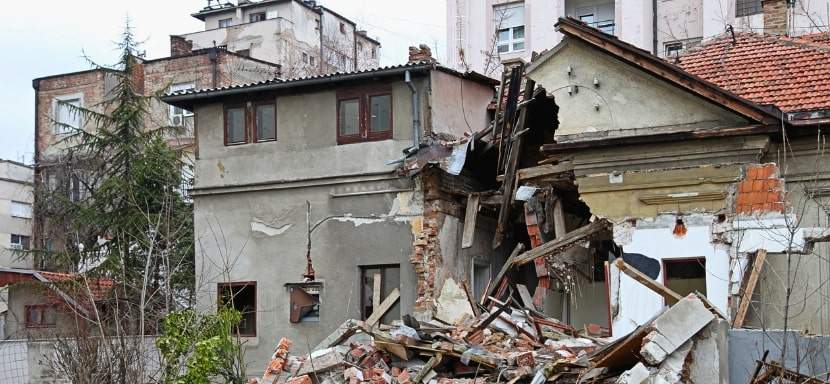
The Top 10 Largest Earthquakes Recorded in History
Here’s a list of the top 10 largest recorded earthquakes in history, based on their magnitude on the Moment Magnitude Scale (Mw), which is the most reliable method currently used to estimate an earthquake’s size:
1) Valdivia, Chile – May 22, 1960 (Magnitude 9.5): This was the most powerful earthquake ever recorded, affecting southern Chile, causing tsunamis across the Pacific Ocean, and leading to thousands of deaths.
2) Prince William Sound, Alaska, USA – March 27, 1964 (Magnitude 9.2): Known as the Great Alaska Earthquake, it caused massive ground fissures, tsunamis, and destruction, particularly in Anchorage.
3) Sumatra, Indonesia – December 26, 2004 (Magnitude 9.1-9.3): This devastating earthquake triggered a series of tsunamis across the Indian Ocean, resulting in significant loss of life and displacement in several countries.
4) Sendai, Japan – March 11, 2011 (Magnitude 9.0-9.1): The Great East Japan Earthquake triggered a massive tsunami, leading to the Fukushima nuclear disaster and thousands of deaths.
5) Kamchatka, Russia – November 4, 1952 (Magnitude 9.0): This earthquake caused significant damage in the Soviet Union’s Kamchatka Peninsula and generated a destructive Pacific-wide tsunami.
6) Bio-Bio, Chile – February 27, 2010 (Magnitude 8.8): This earthquake and the ensuing tsunami caused widespread damage in Chile, killing hundreds and impacting millions.
7) Ecuador—Colombia, March 31, 1906 (Magnitude 8.8): This event resulted in a devastating tsunami that caused extensive damage along the coasts of Ecuador and Colombia.
8) Rat Islands, Alaska, USA – February 4, 1965 (Magnitude 8.7): This earthquake triggered a tsunami in a less populated area, primarily damaging the Aleutian Islands.
9) Northern Sumatra, Indonesia – March 28, 2005 (Magnitude 8.6): This earthquake occurred just months after the 2004 disaster and caused further devastation in the already-affected region.
10) Assam – Tibet, August 15, 1950 (Magnitude 8.6): The Assam-Tibet earthquake caused widespread destruction and landslides, significantly affecting both regions.
These earthquakes remind us of the powerful forces beneath the Earth’s surface and the importance of preparedness and resilience in earthquake-prone areas.
Dusty
Earthquake events produce a lot of thick dust. Experts advise that you include particle masks and goggles in your emergency kit. It would help if you also had the usual survival supplies of canned food, water, battery-operated radio, flashlights, medical supplies, prescription medication, and any vital documents needed.
Interesting Facts About Earthquakes
- Global Seismic Activity: The 1960 Chilean earthquake, the most powerful ever recorded, generated seismic waves that traversed the globe, causing the Earth to resonate for days following the event.
- Annual Earthquake Counts: The National Earthquake Information Center (NEIC) documents approximately 20,000 earthquakes annually worldwide, equating to about 50 per day. Nonetheless, millions more occur yearly, many of which are too faint to be detected.
- Southern California’s Seismicity: This region experiences roughly 10,000 earthquakes each year. While most are imperceptible, a significant quake can initiate an aftershock sequence, producing numerous earthquakes of varying magnitudes for months.
- Tectonic Plate Movement: The Earth’s crust comprises 20 constantly shifting plates. The accumulation of pressure from these movements can lead to crustal fractures, releasing stress as energy in the form of seismic waves, resulting in earthquakes.
- Natural Causes of Earthquakes: Besides tectonic plate movement, natural phenomena such as volcanic eruptions and meteor impacts can also induce earthquakes. However, most natural earthquakes are precipitated by the shifting of the Earth’s plates.
- 2004 Indian Ocean Earthquake and Tsunamis: On December 26, 2004, an undersea earthquake in the Indian Ocean catalyzed a series of catastrophic tsunamis, reaching 100 feet. The tsunamis devastated coastal communities across the Indian Ocean, claiming over 225,000 lives in 11 countries.
- Induced Seismicity from Oil Extraction: The extraction of oil, typically found in softer sediment, can lead to “mini-seismic events.” These events occur as other rocks move to fill the vacated spaces, though humans generally do not feel them.
- Historic Earthquakes: The most lethal earthquake struck Shansi, China, on January 23, 1556, resulting in an estimated 830,000 fatalities.
- Tidal Forces and Seismic Activity: Research indicates that the sun’s and moon’s gravitational pull affects ocean tides and stimulates minor tidal forces within the Earth’s crust. These forces, such as the San Andreas Fault, can activate tremors along fault lines.
- Geological Movements: San Francisco is inching toward Los Angeles at a rate of approximately 2 inches per year due to the lateral movement along the San Andreas Fault. This pace is analogous to the growth rate of human fingernails. Despite popular misconceptions, this movement will not result in California sinking into the ocean; instead, it signifies the slow transformation of the landscape over millions of years.
Conclusion: A Call to Earthquake Preparedness
As we reach the end of our comprehensive journey through earthquake preparedness, the critical takeaway resonates louder than ever: Being well-prepared is not merely an option but a necessity for safeguarding ourselves, our loved ones, and our communities from nature’s unpredictable wrath. The profound insights and strategies discussed underscore the importance of proactive preparation and its invaluable role in mitigating the impacts of seismic events.
Earthquakes, with their sudden onset and potential for widespread devastation, remind us of our volatile world. Yet, within this unpredictability lies the power of human resilience and ingenuity. By adopting the measures outlined—from securing our homes and understanding the science behind earthquakes to supporting each other in recovery—we embrace a stance of readiness that transcends fear.
Let this exploration serve as a source of information and a call to action. The steps we take today, no matter how small, contribute to a safety foundation that can withstand tomorrow’s tremors. Engage in community efforts, educate yourself and others, and implement the practical tips shared to enhance your preparedness.
Remember that preparedness is a continuous learning, adaptation, and collective action journey. Let us move forward with the determination to survive and thrive in earthquake challenges. The path to resilience is paved with our choices today—let’s choose to be prepared, informed, and united in our approach to earthquake readiness. We can and will build a safer, more resilient future for all.
FAQs About Earthquake Survival
What should I do the moment I feel an earthquake?
Immediately Drop, Cover, and Hold On. Get under a sturdy table or desk, cover your head and neck, and hold on until the shaking stops.
How can I prepare my home for an earthquake?
Secure heavy furniture and appliances to the walls, install safety latches on cabinets, create an emergency kit, and conduct regular safety audits to identify and mitigate risks.
Is it safe to stand in a doorway during an earthquake?
This advice is outdated. The safest action is to Drop, Cover, and Hold On under a piece of sturdy furniture. Doorways in modern homes are no more substantial than other parts of the house.
How do I protect myself during an earthquake if I’m outside?
Move away from buildings, streetlights, and utility wires to an open area and Drop, Cover, and Hold On until the shaking stops.
What should I do if I’m driving during an earthquake?
Pull over to a safe place, stay inside the vehicle, and avoid stopping under overpasses, bridges, or trees. Once the shaking has stopped, proceed cautiously, watching for road hazards.
How can I communicate with family if we’re separated during an earthquake?
Establish a family emergency plan that includes an out-of-area contact with whom everyone can check in via phone or text. Consider using social media and emergency apps that allow for check-ins.
Are aftershocks dangerous?
Yes, aftershocks can cause additional damage to structures weakened by the main quake. Be prepared to Drop, Cover, and Hold On during aftershocks.
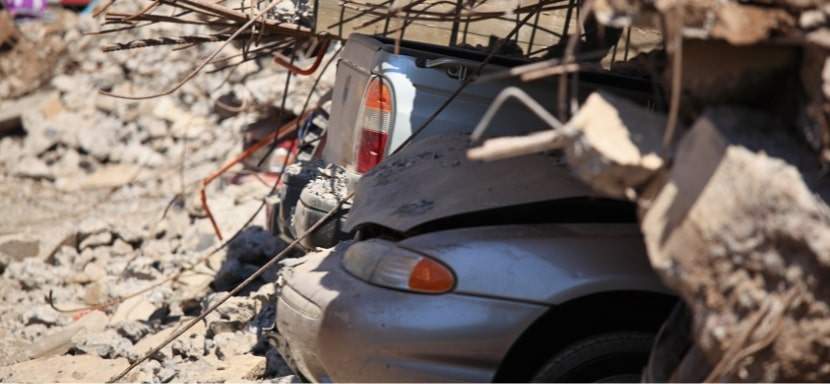
More Nature’s Wrath Scenarios
How to Survive a Wildfire
Wildfires are one of nature’s most unpredictable and destructive forces, and they can engulf entire…
How to Survive a Landslide
Landslides are one of nature’s sudden, unexpected acts, like finding a $20 bill in an old jacket, but far…
How to Survive a Hurricane
Hurricanes are nature’s way of reminding us who’s in charge—think of it as the weather throwing a…
How to Survive a Tsunami
Surviving a tsunami is a terrifying thought, but it’s something we should all be aware of, especially if we…
How to Survive a Lightning Strike
Thunderstorms are a mesmerizing display of nature’s power, but they also bring the terrifying threat…
Recent Survival Posts
How to Survive a Layoff
Layoffs feel personal—even when they’re not. One day, you’re responding to Slack messages and forwarding…
How to Survive a Drug Test
I never imagined I’d be so emotionally invested in a paper cup. But there I was, standing under the fluorescent…
How to Survive an Interrogation
If you’ve ever been caught in the crosshairs of an overly enthusiastic mall cop or stared down by someone…
How to Survive a Nightclub Shooting
Nightclubs pulse with life—lights flashing, music pounding, bodies packed tight on the dance floor. It’s a place to…
How to Survive a Bachelor Party
A bachelor party is a delicate mix of celebration, chaos, and questionable decision-making, wrapped…
More Nature’s Wrath Survival Scenarios
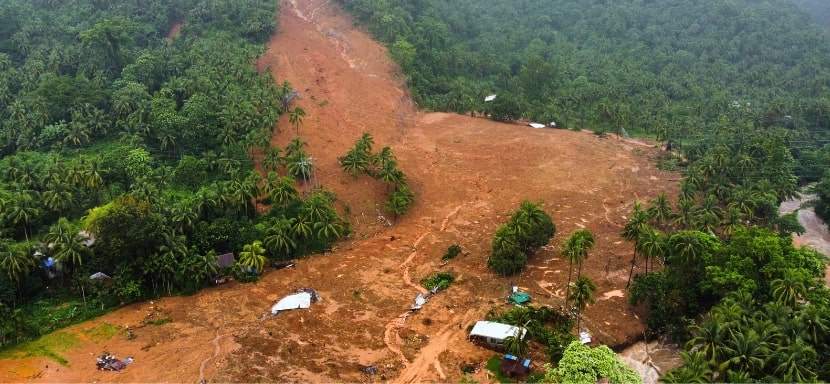
How to Survive a Landslide
Landslides are one of nature's sudden, unexpected acts, like finding a $20 bill in an old jacket—only there's no thrill of discovery, just destruction. They strike without much warning, sweeping away everything in their path—homes, roads, vehicles, and, tragically,...
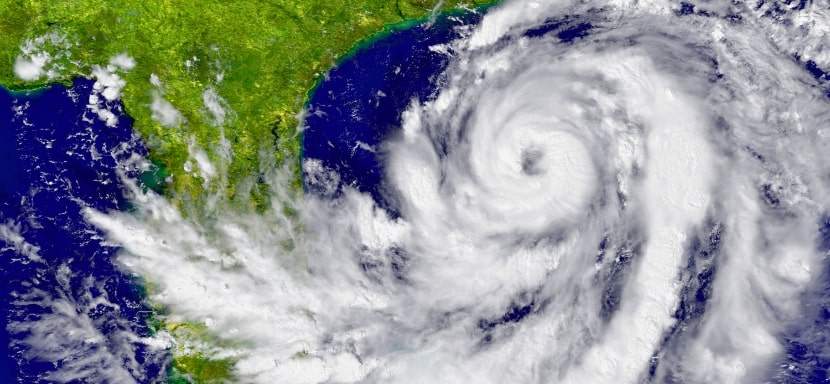
How to Survive a Hurricane
Hurricanes are nature's way of reminding us who's in charge—think of it as the weather throwing a tantrum. The winds howl, the rain pours, and trees bend until they snap. But while hurricanes are frightening, surviving them is possible with good preparation, clear...
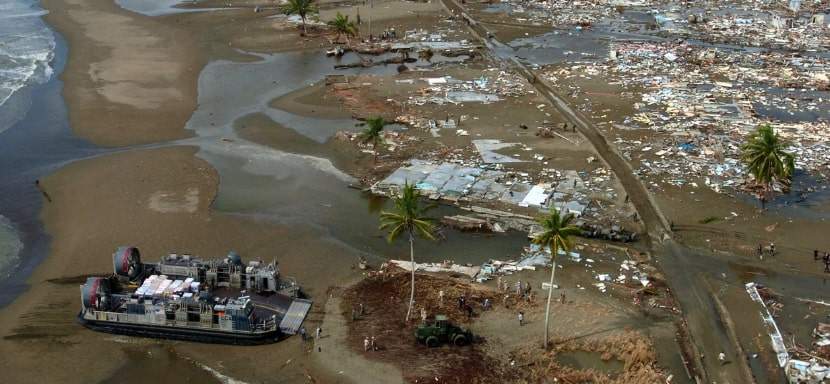
How to Survive a Tsunami
Surviving a tsunami is a terrifying thought, but we should all be aware of it, especially if we live near coastlines. A tsunami can strike with little warning, and the key to making it through alive is to know what to do before, during, and after the waves hit. Here,...
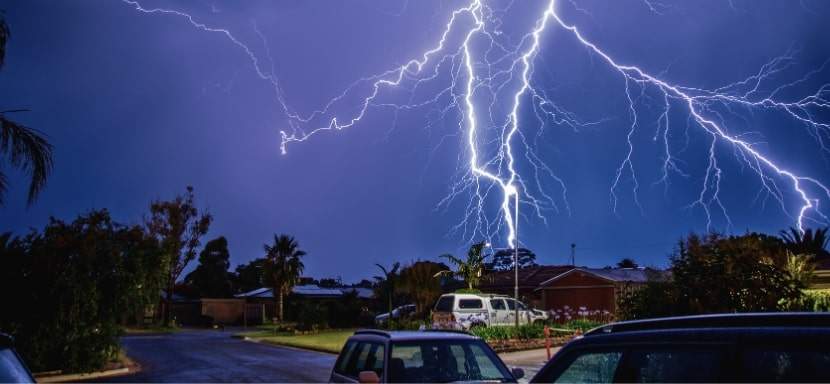
How to Survive a Lightning Strike
Thunderstorms are a mesmerizing display of nature's power, but they also bring the terrifying threat of lightning strikes. Each year, thousands of people worldwide are affected by lightning, with severe injuries and even fatalities resulting from these sudden...
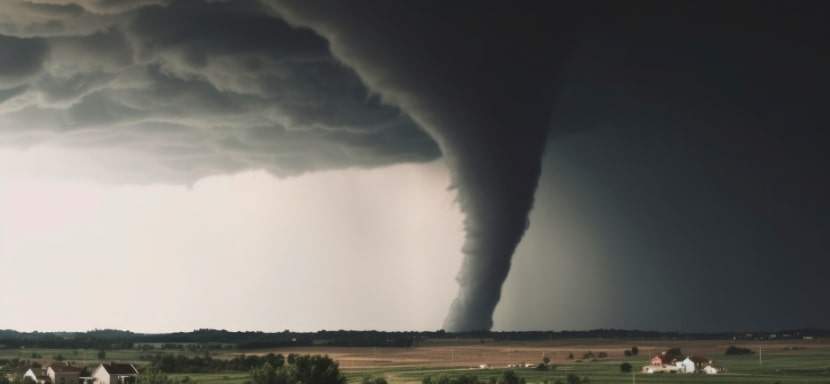
How to Survive a Tornado
Tornado Safety: How to Survive and Protect Your Family Learn life-saving strategies to protect yourself and your loved ones from the unpredictable fury of tornadoes. Tornadoes are among the most unpredictable and destructive natural phenomena. Their sudden and violent...
More Survival Scenarios

How to Survive a Layoff
When the Floor Falls Out: The Reality of a Layoff Layoffs feel personal—even when they're not. One day, you're responding to Slack messages and forwarding emails. Next, you're staring at your monitor as it logs you out... for good. Whether it's a restructuring, a...

How to Survive a Drug Test
The Cup, The Room, The Truth I never imagined I’d be so emotionally invested in a paper cup. But there I was, standing under the fluorescent hum of a strip-mall clinic, trying to recall the last time I ate a poppy seed bagel. That’s the thing about drug tests—they...

How to Survive an Interrogation
If you've ever been caught in the crosshairs of an overly enthusiastic mall cop or stared down by someone in a uniform with a clipboard and a glare, you’ve felt it — the chilly fingers of interrogation anxiety. And while most of us imagine interrogation scenes as...

How to Survive a Nightclub Shooting
Nightclubs pulse with life—lights flashing, music pounding, bodies packed tight on the dance floor. It’s a place to escape, feel the rhythm, and lose yourself in the crowd. But that same energy can turn deadly in seconds, transforming a night of fun into one of the...

How to Survive a Bachelor Party
A bachelor party is a delicate mix of celebration, chaos, and questionable decision-making, wrapped in the noble intention of sending the groom off into married life with a night he’ll (hopefully) remember. It’s a ritual as old as time—well, as old as men deciding...

How to Survive Your First Time at the Gym
Walking into a gym for the first time can feel like stepping into an alien world. The machines hum with purpose, the regulars move confidently, and you’re left standing there, clutching your water bottle, wondering whether you’re in the right place—or on the right...

How to Survive a Worldwide Communications Breakdown
Imagine waking up to silence. Your phone doesn’t buzz, your email won’t load, and even your local radio station crackles with static. A worldwide communications breakdown has hit. What next? For many, this doomsday scenario may sound like the opening lines of a...
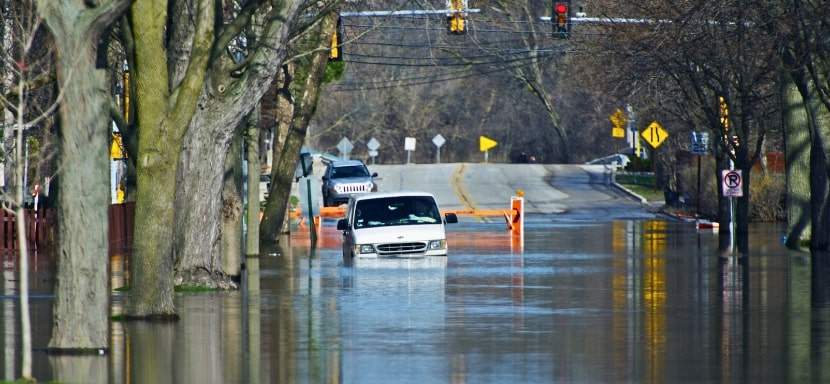
How to Survive a Flash Flood While Driving
Surviving a flash flood while driving requires quick thinking, calmness, and a solid plan to ensure your safety. Preparation can make all the difference between a close call and a catastrophe in emergencies like this. This guide provides practical advice to protect...

How to Build an Emergency Kit
Emergencies don’t knock politely at the door. They barge in, uninvited, like a distant relative with a penchant for drama, turning your world upside down without warning. Whether it’s a power outage, a natural disaster, or an unexpected evacuation, the key to staying...

How to Protect Yourself From Insects in the Wild
There’s nothing like being out in the wild—birdsong echoing through the trees, the fresh scent of earth, and a deep sense of peace that makes you think, “Ah, this is what life is about.” But then comes the buzzing. Mosquitoes, ticks, and flies swoop in like uninvited...
